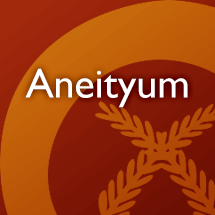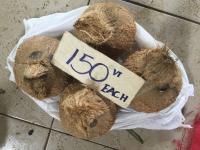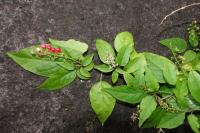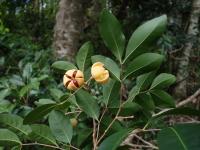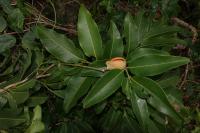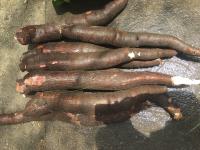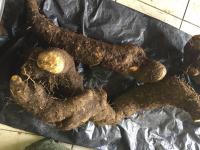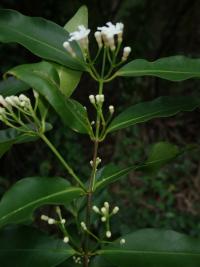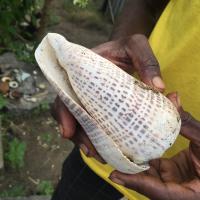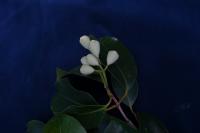This page has returned 100 entries
nourasjohou
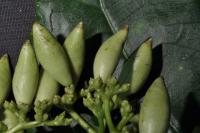
nowahau
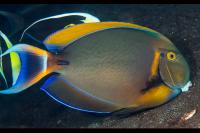
n. Black-spot surgeonfish
Example: Photo by zsispeo / Flickr.com, License: CC BY-NC-SA 3.0 via Fishes of Australia
bookmarknowanlas
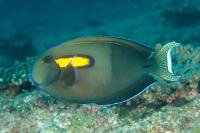
n. Orangespot surgeonfish
Example: Photo by Ian Shaw / iNaturalist.org, License: CC BY-NC 3.0 via Fishes of Australia
bookmarknowanu
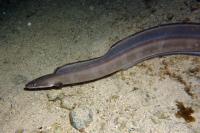
n. Longfin African conger, moustache conger
Example: Photo by Patrick Randall, License: CC BY-SA 3.0 via Fishes of Australia
bookmarknowat
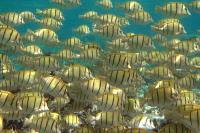
n. Convict surgeonfish, convict tang
Example: Photo by Philippe Bourjon / Fishbase, License: CC BY-SA 3.0 via Fishes of Australia
bookmarknowat apen

n. Striated surgeonfish
Example: Photo by Mark Rosenstein / iNaturalist.org, License: CC BY-NC-SA 3.0 via Fishes of Australia
bookmarknoweitopgat

nowigma
n. a dried or withered breadfruit tree
bookmarknowyeyang
n. shrub to 2 m tall, flowers pink (collection: Michael J. Balick #4955)
Example: The tubers of this variety are sweet, not bitter and are eaten after cooking. The young leaves are eaten after boiling in water until they are soft, either plain or cooked in soup. It is important to only harvest and prepare the young leaves in this way, as the older leaves will not get soft even after cooking. The young leaves are used to cover the top layer of the earth oven, on top of the stones that comprise the upper layer of the earth oven.
bookmarknoyeiwow
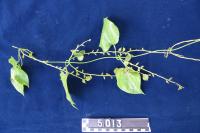
n. vine to 4 m, cultivated (collection: Michael J. Balick #5013)
Example: This is a cultivated, edible tuber. If a cyclone comes and blows the vines, the tuber will still be intact. The vines of this type of Dioscorea are very strong. Normal yam vine tears in high winds and the tuber will not grow for food but will die; this one will not. It is very good for places with strong winds and storms.
bookmarknuae

n. vine, growing in open disturbed area. flowers white. (collection: Gregory M. Plunkett #3589)
Example: To build a cyclone house, take the vine of this species to tie pieces of the house. To prepare the vine for use as rope, collect many feet of it, put it in a fire, roll it in a figure 8, wait until it softens and then use for tying. This vine is hard and
bookmarknuae

nuarin
n. plat (a map, drawn to scale, showing divisions in a piece of land)
bookmarknuarin abras
n. cliff
bookmarknuarin adalamak
n. plain
bookmarknuarin aridjai vaig
n. an upward slope
bookmarknuarin eptu
n. meadow
bookmarknuarin marara
n. dale
bookmarknucije
n. Sirius, the Dog Star
bookmarknucja
n. kind of sugarcane
bookmarknucje
n. the Norfolk Island pine
bookmarknucsei
n. kind of taro
bookmarknucye
n. the red star, the "hand" in the constellation Orion; also "necye"
bookmarknuden
n. coconut leaves in the middle of the cluster, neither old nor new
bookmarknudto
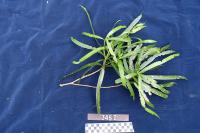
n. small tree, 4 m tall (collection: Gregory M. Plunkett #3452)
Example: 1a. The stem of this plant is used to make a spear, as it is always straight and very strong. It is a small growing plant, just right for length of a spear. 1b. Make a spear for fishing, peel bark, heat stem, affix points to end. 2. Name is the name of a fish. 3. Rafters for roof.
bookmarknuei
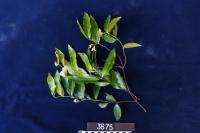
n. vine, growing up trees in primary forest at edge of river. flower white. (collection: Gregory M. Plunkett #3675)
Example: This vine is collected, rolled in a figure 8 and put on a fire to soften it and used to tie posts. It is tied when warm, because when it cools it is very strong, "like wire." It does not burn on the fire, only become soft. It is said to be excellent for the construction of cyclone houses, it shrinks after heating to make a very strong rope.
bookmarknuei
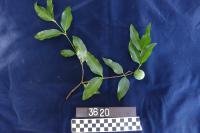
n. vine climbing into the canopy on Sarcomelicope, growing in primary rainforest. Fruits green. (collection: Gregory M. Plunkett #3620)
Example: This plant is used for local rope. Coil it in a figure 8, heat on a fire, when it is soft, use it for tying poles on a house. It is very strong when cool and dry.
bookmarknuei
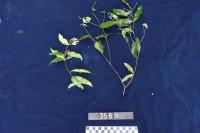
n. vine, growing in open disturbed area. Flowers white. (collection: Gregory M. Plunkett #3589)
Example: To build a cyclone house, take the vine of this species to tie pieces of the house. To prepare the vine for use as rope, collect many feet of it, put it in a fire, roll it in a figure 8, wait until it softens and then use for tying. This vine is hard and needs to be heated to a high temperature in the fire to make it soft; the person preparing this must use gloves to tie it to the posts and rafters while it is still warm. When it cools, it is very strong. Rope made from this vine will last a long time--perhaps 10-15 years. It can also be used to make a regular house.
bookmarknuei
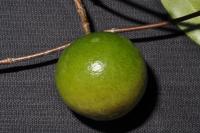
n. vine climbing up a dead tree, growing in dense rainforest. Fruits green. (collection: Gregory M. Plunkett #4056)
Example: 1. The stems are used as a traditional rope to fasten house posts. First a length of stem is coiled in a figure-eight pattern. It is then heated to render it pliable. Once heated, for several minutes, it is immediately used to fasten the posts. When cool, it is set and inflexible. Such a fastener can last 20 years.
bookmarknugep
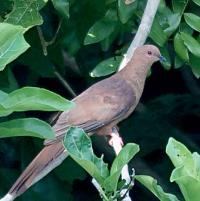
[nugep] n. Mackinlay’s cuckoo dove
Example: Photo by David Cook Wildlife Photography / Wikimedia Commons, License: CC BY 2.0 via Wikimedia Commons
bookmarknugnas iran
n. a bunch of taro
bookmarknugnyimtau noho
n. kind of palm
bookmarknugnyin jap
n. the ebbing tide
bookmarknugnyiobod
n. kind of plant, grass, or fern
bookmarknugyaubod
n. kind of tree
bookmarknuh
n. a yam
bookmarknuhialeg
n. the morning
bookmarknuhialeg upni
nuhihialeg
n. the early morning
bookmarknuhlinevai
n. kind of banana
bookmarknuhonwei
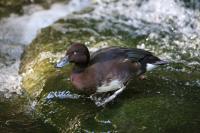
nuhujcei
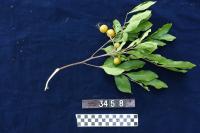
nuhujcei
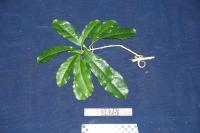
n. liana, growing at edge of forest. Fruit. (collection: Gregory M. Plunkett #3475)
Example: 1. When the stems of this plant are older, and it is a vine, is used to tie thatch on roof rafters as it bends well. 2. Burned leaves and rubbed on fishing line and spear to increase catch – used with other unspecified leaves, that are forageable. When you are fishing and if you set a basket or mat it means danger and you have to return to shore – the spirit is telling you that it is enough fishing.
bookmarknuhujcei
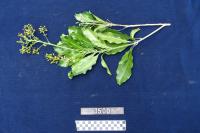
n. liana, climbing on fallen tree (collection: Gregory M. Plunkett #3500)
Example: 1. When the stems of this plant are older, and it is a vine, is used to tie thatch on roof rafters as it bends well. 2. Burned leaves and rubbed on fishing line and spear to increase catch – used with other unspecified leaves, that are forageable. When you are fishing and if you set a basket or mat it means danger and you have to return to shore – the spirit is telling you that it is enough fishing.
bookmarknuhujcei
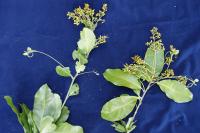
n. liana, climbing on Garcinia tree (collection: Gregory M. Plunkett #3585)
Example: 1. When the stems of this plant are older, and it is a vine, is used to tie thatch on roof rafters as it bends well. 2. Burned leaves and rubbed on fishing line and spear to increase catch – used with other unspecified leaves, that are forageable. When you are fishing and if you set a basket or mat it means danger and you have to return to shore – the spirit is telling you that it is enough fishing.
bookmarknuhujcei
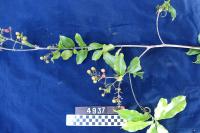
n. vine to 5 m, flower yellow (collection: Michael J. Balick #4937)
Example: In the old days, the hooks of this plant were used as a kind of small fishing hook. Heat the hook over a fire to make it strong, tie a rope to it and use it to catch fish. Take inner bark--1 handful and boil in a full pot of water and wash the body 1x daily to treat scabies. Can work in as soon as 2 days. It cures the sores very fast.
bookmarknuka
n. leaves for an oven
bookmarknumalpau
n. wind-related term; no definition provided
bookmarknumarak kamwea
n. kind of sugarcane
bookmarknumlah
n. kind of tree
bookmarknumnava
n. kind of sugarcane
bookmarknumnyac
n. a kind of bulbous root
bookmarknumrauad
n. a halo around the sun or moon
bookmarknumrinhou
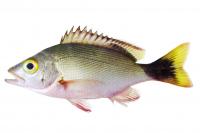
n. Humpback red snapper, paddletail
Example: Photo by Jeffrey T. Williams / Smithsonian Institution, License: CC BY-SA 3.0 via Fishes of Australia
bookmarknumta
n. shoots of taro for planting
bookmarknumu yehec
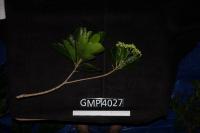
numujced
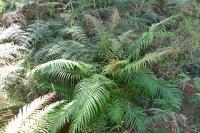
n. fern to 0. 75 m, sori brown. Growing in pine forest. (collection: Michael J. Balick #4983)
Example: Join two of the inrolled fronds together at the part where the frond is opening (the tip that is curled) such that the leaves are held together by their unfolding growing tips. Place this along the path that is frequented by a wild pig (they travel along paths) and when the pig passes these two leaves, and is chased by a hunter’s dogs, these leaves in this formation are said to sap some of the pig’s energy and thus allow the dogs to catch up with it. This was explained to Tony by another person who mentioned it as a sort of magical power possessed by this type of fern.
bookmarknumujced

n. terrestrial fern, 0. 4 m tall (collection: Gregory M. Plunkett #3577)
Example: Join two of the inrolled fronds together at the part where the frond is opening (the tip that is curled) such that the leaves are held together by their unfolding growing tips. Place this along the path that is frequented by a wild pig (they travel along paths) and when the pig passes these two leaves, and is chased by a hunter’s dogs, these leaves in this formation are said to sap some of the pig’s energy and thus allow the dogs to catch up with it. This was explained to Tony by another person who mentioned it as a sort of magical power possessed by this type of fern.
bookmarknumurumu
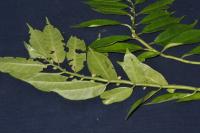
n. epiphyte on Syzygium tree, growing in secondary forest along trail above river. old fruits. (collection: Gregory M. Plunkett #3660)
Example: Put several leaves of this species together to wrap food, especially the fresh water eel, and to carry plants of taro, kava, holding the leaves over one’s shoulder to carry these crops. Used as a baby’s remedy for when the baby is crying too much because the parents are having to much sex. The baby will also be slow to grow and be thin. To remedy this, must wash the baby with the following mixture: nekei atimi (bark), nohos atimi (green skin of the stem), nepnatimi ataman (part not specified). Scrap about 1 inch cubed of the nekei atimi into your hand along with 1in x 4in of the first layer of the green skin of the banana stem (nohos atimi), and the top 8 leaves from about two separate branches of the nepnatimi ataman. Bind all ingredients together and pound them and put everything in the baby’s water for bathing. Wash the baby in water made with this mixture. Do not wipe the baby dry but let it air dry. The next day when you wash the baby with soap, you must re-wash them with the mixture again. Do this for 5 days with the same water mixture. It may small bad but that is okay. Finally on day 5, take the juice from the outter layer of skin on the stem of the banana, nohos atimi, and give a full spoonful of the juice to the baby to drink. Other plants can be added to the bathing water but these are the three primary ingredients.
bookmarknumurumu
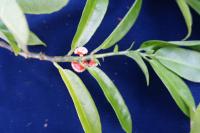
numuyehec
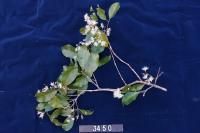
numuyehec
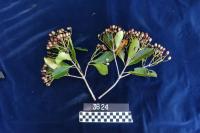
nunyepec
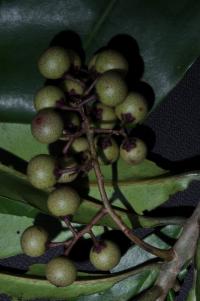
n. understory tree, 6 m tall (collection: Gregory M. Plunkett #4049)
Example: 1. The name means "knife of sandpaper", a type of fish. The leaf base resembles the fin of the fish. 2. In the past, a spear was made from the sapling wood of this plant for tribal warfare. Today, spears are made from this plant for fishing. First, a relatively straight spaling is chosen and then heated over a fire. The pliable portion of wood is straightened and then decorticated. When cool, a portion of wire can be affixed on one end to aid in the spearing of fish.
bookmarknup inceen
n. the rib of a leaf
bookmarknupnyineuc
n. another name for masoa; arrowroot
bookmark